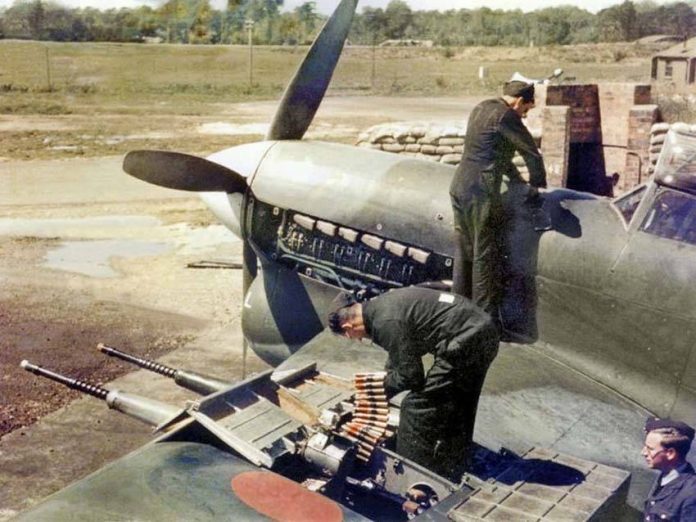
Continuing the theme of aviation weapons, quite predictably go to World War II aircraft guns. Just make a reservation, that in general the article is devoted to 20 mm guns, and the only 23-mm gun got here because, which is nevertheless closer in characteristics to 20 mm colleagues, rather than those, which will be discussed later.
And one moment, on which I would like to draw attention, based past articles. Some readers ask, why didn’t we talk about some developments? It's simple: actually fought in our ratings, not developed weapons. And the best, in our opinion.
And we are very grateful to you for your votes in favor of this or that weapon. Although, we think, we have some excessive patriotism (regarding the same ShKAS). Although in large-caliber machine guns everything was natural, "Berezin" was really the perfect weapon.
so, air guns.
1. Oerlikon FF. Switzerland
If there is somewhere a weapon aviation god, then in our case his first word would be the word "Oerlikon". Not quite correct transcription, well god be with him, true? The main thing in our history is, that it was precisely from Dr. Becker's developments that numerous aviation and anti-aircraft automatic guns from Oerlikon Contraves AG were born. The title already covered the essence: from Latin contra aves - «against birds». In fact, primarily anti-air, the second - aviation.
Erlikon's air cannons attracted many. Just because, that really in the beginning of the 30s nobody let them out. And all this advanced construction led to a well-known position - during the Second World War, almost the whole world shot at each other precisely from the Erlikons.
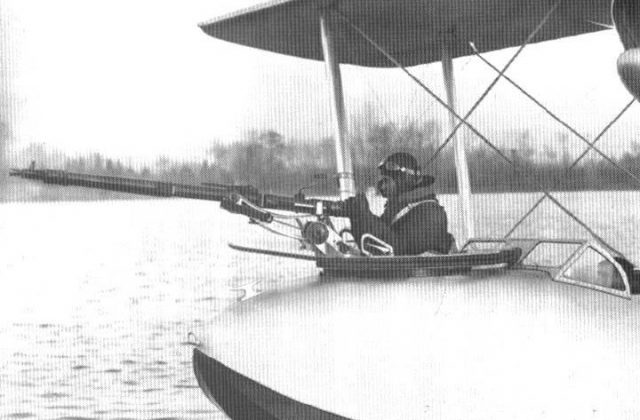
Initially, the Oerlikons were turret in bulk. anticipated, that the fighter, anticipating victory over a bomber, could be a little sad, getting forehead instead of a handful of peas 7,7 mm cucumber 20 mm. And that was its essence and understanding of the situation..
Therefore, immediately after, how turret versions of AF and AL guns went to market, Oerlikon acquiring a patent from Ispano-Suiza for installing guns in the collapse of cylinders of a water-cooling engine, began developing a new generation of weapons.
This series of Erlikon guns entered the market in 1935 year. She got the trademark FF (from German Flügel Fest - «wing installation»). These guns were already regarded as stationary offensive weapons.. Although, if desired, they could be installed and turret, just not installing a pneumatic recharge mechanism.
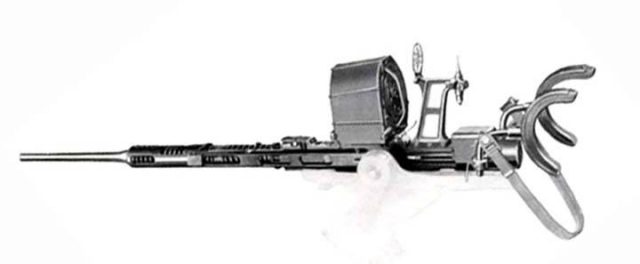
But the most interesting "trick" of "Erlikon" was a huge assortment of peripherals, which was sold with every gun. Various engine mounts, turrets, wing installations, pneumatic and hydraulic charging mechanisms, wheeled and anti-aircraft machines in the infantry, tank and ship execution, as well as various shops. For each of the guns, a set of drum shops with a capacity of 30, 45, 60, 75 and 100 rounds, and for the old customers of the company, the possibility of using old 15-round horn magazines from the 20s.
Generally, really, "Any whim for the client's money". But in fact - a superbly unified weapon system for almost all occasions. And all this from Becker's rather humble cannon, invented back in 1918 year ...
The only drawback of these guns was that, that work on the basis of a free shutter did not make it possible to synchronize the operation of the cannons with the engine. But, As we know, it didn’t sadden those, who used them. MG-FF at the root of the wing of the FW-190 with ammunition in 180 shells - it was quite hefty.
A significant number of countries have become clients of Erlikon. Guns based on the FF family were used by Germany, Japan, Italy, Romania, Poland, United Kingdom, Canada.
By the beginning of World War II, the development of aviation versions of Erlikons had stopped. In terms of the main parameters of the Oerlikon air cannon, the FF began to give way to the French, Soviet and German guns. But mostly, played a role in the impossibility of synchronizing the guns with the engines.
The first was not easy at all times ...
dignity: perfect set of peripherals for adapting the gun, reliability.
disadvantages: impossibility of synchronization.
2. MG-151. Germany
The first prototype of this gun appeared in 1935 year, but only in 1940 year gun MG 151 was put into production. This is not why we dug for so long, that there were some difficulties, but because, that the German command could not decide on priorities. But when it dawned on the Luftwaffe, that something needs to be done with the rapidly aging MG-FF, everything went as it should be for the Germans, that is, quickly.

So it turned out MG-151/20, in two guises: 15mm heavy machine gun and 20mm cannon.
Some "experts" regard the 15-mm and 20-mm versions as a kind of bicaliber weapon, seriously telling, that with a "light movement of the hand" the 15-mm machine gun was transformed into a 20-mm cannon by simply replacing the barrel.
Of course, this is not true, but forgive non-specialists. The machine gun did not turn into a cannon, since this would not only have to change the barrel, but also the chamber chamber, cartridge receiver, buffer body and back buffer itself, sear.
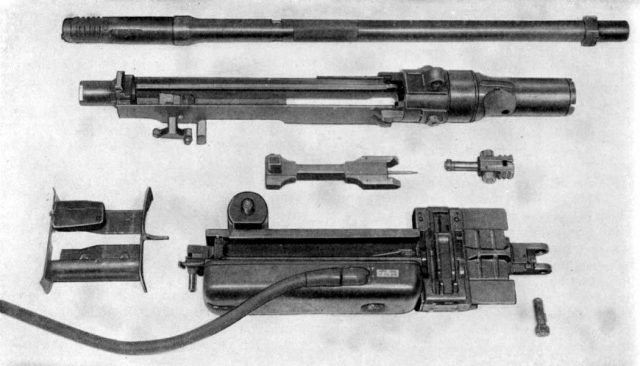
But the unification was really quite high, we must pay tribute to the German engineers. And indeed, at the assembly stage, it was possible to assemble a machine gun in one workshop, and a cannon.
Cartridge, by the way, remained the same low-power 20x82 mm, the projectile of which was unified with the MG-FF projectile. The sleeve was different.
Unification did not work for the good. Happened, that the 15mm machine gun had more luxurious ballistics, than a 20mm cannon. 15-mm MG-151 was, perhaps, one of the best in its class, but the MG-151/20 turned out to be very mediocre precisely due to the weak cartridge.
Rescued a high-explosive shell, which was very powerful, perhaps, the most powerful in the class and with good ballistics. The armor-piercing one was completely weak in all respects..
but, the Germans did not bother at all, since there was only one cannon in the world, which was really stronger than MG-151/20. The Soviet ShVAK, which had better combat characteristics, with the best ballistics and rate of fire. The only thing, where the 151st had the advantage, repeat, they were shells.
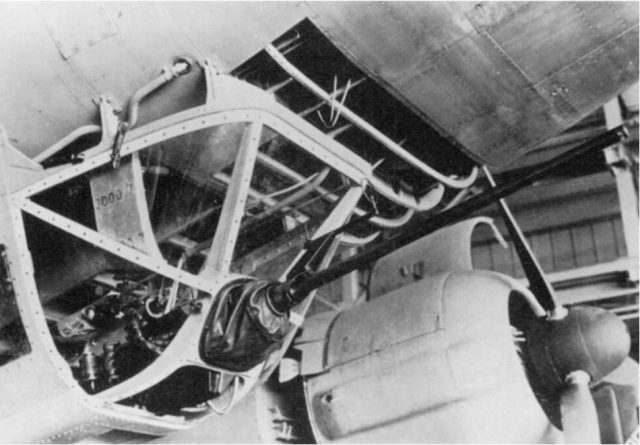
20-mm MG-151/20 from end 1941 of the year became the main armament of the Luftwaffe aircraft. In fact, in the German fighter aviation there was no plane on which this weapon would not stand, at least in some of the submodifications. On Bf-109 fighters, it was installed in engine and wing versions.. On the FW-190 pair MG 151/20 installed in a synchronous design at the root of the wing. The strength of the 151st was, that the synchronous variants did not lose much in the rate of fire. The rate of fire decreased from 700-750 to 550-680 rounds / min.
And in bomber and transport aircraft on the planes were turret versions of the MG 151/20, which were completed with two handles with a trigger and a frame sight placed on the bracket.

These guns were installed in the shooting points of the FW-200 and He-177 bombers., in the nose turret of the Ju-188 and was supposed to be used not so much for defense against fighters, how many for shelling ground and surface targets. In HDL.151 turrets of several modifications, the MG-151/20 cannon stood on Do-24 flying boats, BV-138 and BV-222 and some versions of the FW-200 and He-177 bombers in the top mount.
Generally, can say, that ALL German planes, armed with air cannons, were somehow connected with MG-151/20.
Aircraft guns MG-151 were produced in Germany with 1940 years until the end of the war, at seven enterprises. The total number of fired guns of all modifications is estimated at 40-50 thousand pieces. This amount was enough not only for the needs of the Luftwaffe. The Italians received about 2 thousand guns MG-151/20, armed with Macchi C.205 fighters, Fiat G.55 is Reggiane Re.2005.
Romanians received several hundred - they were armed with IAR 81C fighters. In September 1942 years were delivered to Japan 800 guns MG-151/20 and 400 thousand cartridges for them. Ki-61-Iс fighters were armed.
Generally, MG-151/20 can be called the main Axis air cannon.
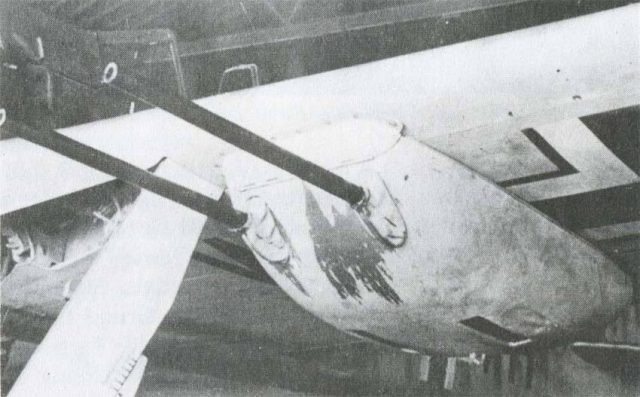
dignity: reliability, rate.
disadvantages: weak cartridge with poor projectile ballistics.
3. Hispano-Suiza HS.404. France
The whole essence of the French company Hispano-Suiza can be expressed in one name: Mark Birkigt. In French life - Mark Birkier. It was he who created the model 404 and everyone who followed her.
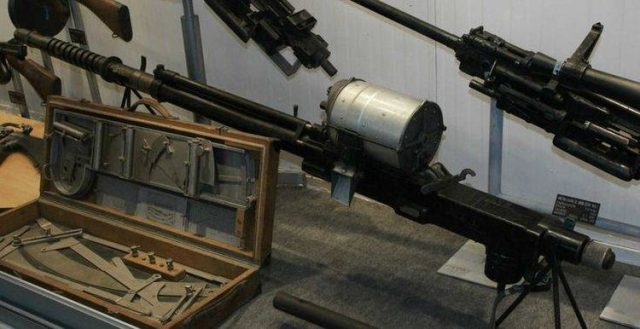
Strictly speaking, there was nothing fundamentally new in the design of Mark Birkier's cannon. Only well-assembled old, but how…
Prison is a principle, patented by the American gunsmith Karl Svebilius back in 1919 year. Trigger mechanism - Italian designer Alfredo Scotti.
Birkier combined the developments of Swiebilius and Scotti, received an original development, while maintaining a certain constructive continuity with the Oerlikon cannons.
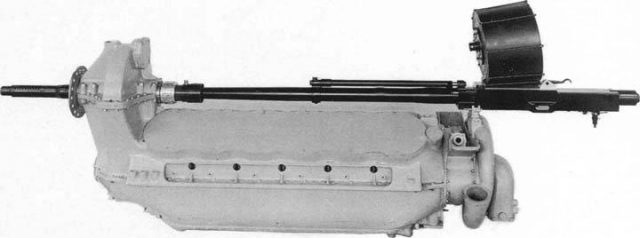
And after the 404th model, Birkier had far-reaching plans to create even more powerful guns.. for example, 25-mm HS.410 cannon for promising cartridges 25x135.5 Mle1937B and 25x159.5 Mle1935-1937A and 30mm HS.411 for the modified Hotchkiss cartridge 25x163 mm, which was increased in dimensions to 30x170 mm.
AT 1937 France nationalized all private enterprises, working with military orders, including the Hispano-Suiza plant. Birkier took offense and moved the production to Geneva.
All developments by Birkier, existing as prototypes, were transferred to the state company "Chatellerault", where it was supposed to complete the development and introduce new weapons into the series. But since the designers and engineers partially left for Switzerland with Birkier, then in France the case dragged on. So, what in 1938 year Hispano-Suiza went bankrupt.
Birkier brought most of the documentation on his samples to Switzerland, hoping to establish the production of guns there. A wide advertising campaign was launched in the hope of attracting foreign buyers.
It turned out to be a very funny situation, when the same designs were offered for sale by a French state-owned company and a Swiss private firm. And, production facilities and equipment were located in France, and documentation and «brain» in Switzerland.
But there was still a third party, United Kingdom. There, at the purpose-built BRAMCo factory, also began to produce HS.404. We must pay tribute to the British, they managed to bring the HS.404 cannon to the highest world standards. Americans, launched a year later, less lucky, they brought the gun to condition only by the end of the Second World War. Yes, relatively successful.
Already during the outbreak of the war at the state arsenal "Chatellerault" was developed a mechanism for the tape feed of the gun. However, before the armistice and occupation, this mechanism was not implemented., and the British were engaged in fine-tuning it, eventually receiving a new modification of the Hispano MkII cannon. Also, the French did not have time to bring drum magazines of increased capacity to the series. 90 and 150 rounds.
Given the very large nomenclature of aircraft, used by the French Air Force during the war, list all types of aircraft, where Hispano guns were used makes no sense. All the latest French fighters were armed with the HS.404 motor-cannon., and the Bloch MB.151 fighter even carried two cannons of this type installed in the wings.
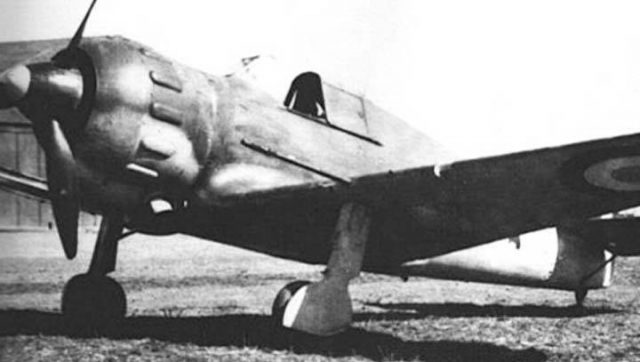
Cannon HS.404 adapted for turrets, formed the basis of the defenses of the newest Amiot bombers 351/354, Liore and Olivier LeO 451 и Farman NC.223.
dignity: rate, reliability, very serious projectile.
disadvantages: the need to lubricate cartridges before loading into drums, lack of ribbon supply.
4. Hispano Mk.II. United Kingdom
Yes, strangely, but the main cannon of the RAF was a French cannon, all the same «Hispano-Suiza Birkigt тип 404». The gun has successfully fought in many armies, except my own, stayed in service for a long time after the war. But the British version of the gun cannot be ignored separately.

At all, when all the ministries of defense rushed for guns, although the choice was small, but was. 'Madsen', "Erlicon", "Hispano-Suiza" ...
The French cannon was good. HS.404 outnumbered Oerlikon in basic combat parameters: rate of fire, initial speed, however, it was more difficult technically. The British preferred French development.
The English-made cannon received the official designation "Hispano-Suiza type 404", or "Hispano Mk.I", option, made in France, called "Hispano-Suiza Birkigt Mod.404" or HS.404.
The first British aircraft, received the HS.404 cannon was the Westland twin-engined interceptor «Whirlwind», purposefully designed for the installation of a 4-gun battery in the nose.
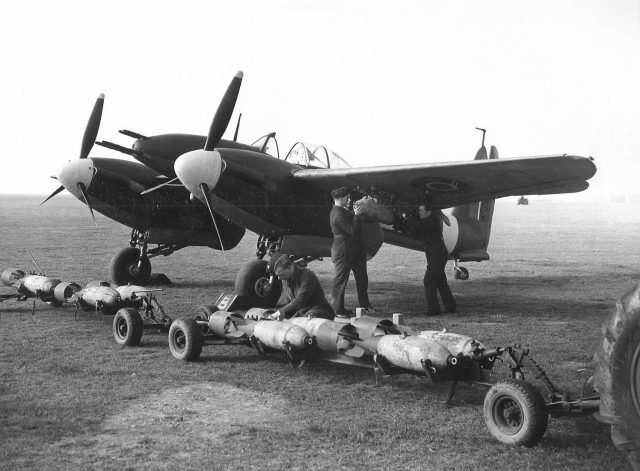
The reliability of the guns of the first series of production plunged into despondency, but the British did their best to, so that the cannon finally works like a human. And it pushed them to an unprecedented step: for cooperation with Birkigt, author of development. But this is a separate detective story in the style of James Bond and we will pay attention to it in the very near future..
And a miracle happened: the gun is working. Yes, at the cost of reducing the rate of fire from 750 rds / min in the basic version up to 600-650 rounds / min. But reliability has grown to a level 1 refused 1500 shots.
One of the significant drawbacks of the HS.404 gun was its ammunition supply system.. It was an extremely bulky drum mechanism on 60 shots, which the, besides weighed 25,4 kg. Plus, this thing severely limited the installation of the cannon in the wings and was the subject of torment until that moment., how the tape method of feeding the gun was invented.
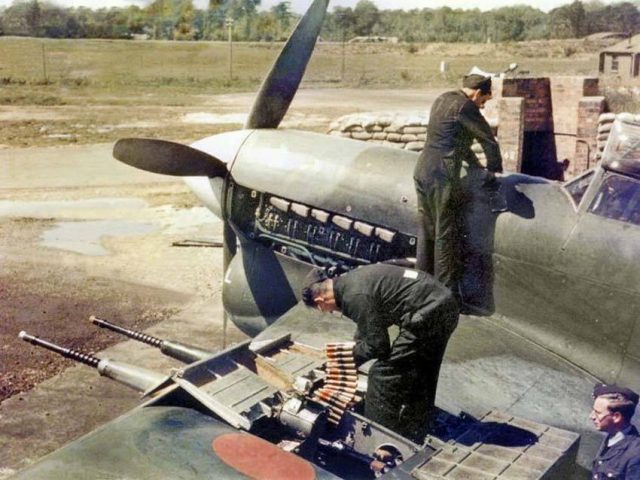
With the tape, the gun was renamed "Hispano Mk.II". The gun was not just liked, but registered on all planes, from "Hurricane" and "Spitfire" to "Bofighter" and "Tempest". Release has ceased to keep up with needs. An attempt was even made to supply guns under Lend-Lease from the United States., but the quality of the American version did not stand up to criticism.
Summing up the history of the use of the gun «Hispano» in British aviation during the war years, should say, that it was a cult weapon. Release of guns «Hispano» continued in various modifications for many years after the end of the war, until it is completely outdated. There is no exact data on the number of guns produced, but according to a rough estimate, during the war years, only in Great Britain about 200 thousand guns, making it the most massive aircraft cannon of all time.
dignity: good projectile with good ballistics
disadvantages: required lubrication of shells before loading.
5. ShVAK. the USSR
ShVAK ... Perhaps, few models in the world of weapons, around which there were so many legends and fictions.

Let's start off with, that even today it is impossible to really understand and define, when exactly did work on this gun begin. For a number of documents, the development of the gun was carried out in parallel with the 12.7-mm machine gun of the same name, and all this was in the framework of the creation of a certain bicaliber system since spring 1932 of the year, i.e, almost parallel with the 7.62-mm ShKAS machine gun.
According to others, the start of work on the 20-mm version of the ShVAK refers to the beginning 1934 of the year, when Shpitalny decided to rework the 12.7 mm machine gun for a more powerful cartridge.
Considering, what was happening in 30-40 years of the last century among Soviet designers, truth, probably, somewhere in between. maybe, Shpitalny really had the idea of a unified weapon for different calibers. Otherwise, why was it necessary to fence such a heavy, complex and expensive machine gun for 12.7 mm caliber?
However, Who said, that in the Soviet Union, difficulties frightened someone? conversely, even stimulated.
And Shpitalny did. Having realized in the ShVAK cannon its operating time in the form of a 10-position drum mechanism for the phased extraction of the cartridge from the tape. This achieved the same crazy rate of fire of the ShKAS, and ShVAK cannot be called slow.
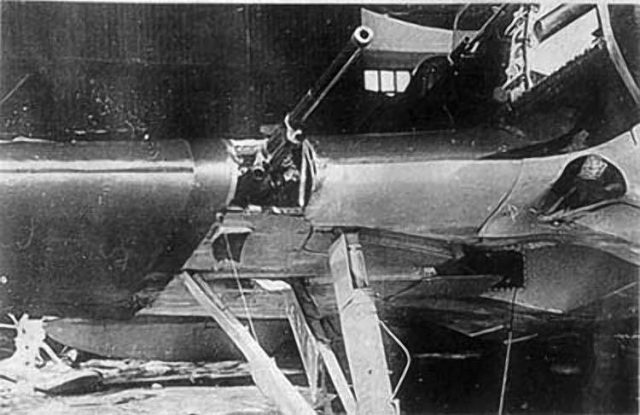
The first Soviet aircraft, where the ShVAK gun was installed, was Polikarpov's fighter I-16. In July 1936 years on the experimental version of the fighter - TsKB-12P (gun) two wing-mounted ShVAK cannons were installed. In the next, 1937 year this modification under the designation type 12 began to be mass-produced at plant number 21.
And at the very end 1936 of the year managed to place the ShVAK in the collapse of the cylinders of the M-100A engine in the I-17 fighter.
The synchronous version appeared much later., since it was, unlike European KB, brand new. But we dealt with this too, setting in 1940 year on the I-153P two synchronous ShVAK.
With the beginning of the war, ShVAK began to produce and massively install on all Soviet fighters.
The bombers were more difficult. The only production aircraft, where turrets with ShVAK were installed, was a heavy bomber Pe-8. But this bomber cannot be called numerous.. rather, piece production.
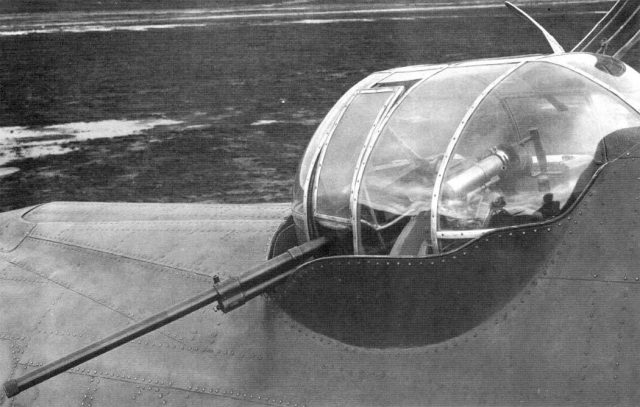
And when the I-16 was discontinued, and on the Il-2 they began to put VYa guns, then there was no need for the wing version of the ShVAK. true, there was a small series in 1943 year, to replace machine guns on "Hurricanes".
Talking about ShVAK's role in the war, worth mentioning about the quantity. Taking into account the pre-war release, cannon ShVAK was released in more than 100 thousand copies. In fact, this is one of the most massive aircraft cannons in its class, and in terms of quantity it is second only to the Hispano cannon., which is mentioned above.
How to evaluate ShVAK, so that everything is fair? There were many shortcomings. And a frankly weak projectile, and unimportant ballistics, and the complexity of construction and maintenance. But the first two shortcomings were more than offset by the rate of fire..
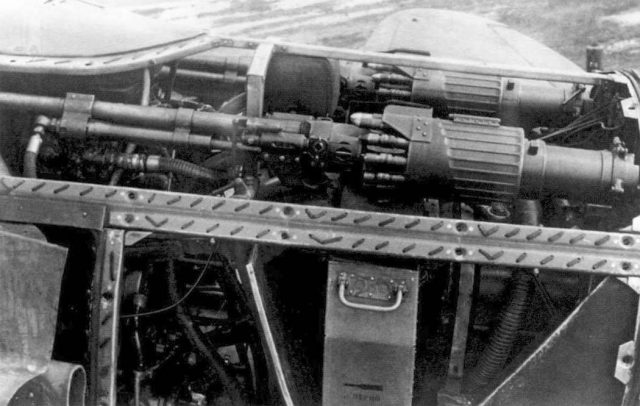
Nevertheless, gun ShVAK Shpitalny and Vladimirov was the main weapon of the Red Army Air Force in the fight against the Luftwaffe. And even the weak ShVAK shells were enough, to carry all the aircraft available to the Luftwaffe. That case, when quantity and rate of fire were deciding.
Of course, if the Germans had heavy and well-armed bombers like American "fortresses", it would be very difficult for our pilots. But leaving the subjunctive mood, so to speak: in a duel with German cannons ShVAK clearly emerged victorious.
dignity: rate.
disadvantages: complex construction, weak projectile with poor ballistics.
6. But-5. Japan
The Japanese had their own way. However, as always, on the verge of understanding.

In the Japanese Air Force before the war, guns were. No-1 and No-2. To tell, that they were unsatisfactory - say nothing, they were created on the basis of Type 97 anti-tank rifles.
These were rather bulky systems., with a terribly low rate of fire, not exceeding 400 rounds / min. And in 1941 year, the Japanese command began to solve the problems of developing new air cannons.
Moreover, in Japan in 1937 year, the licensed production of Swiss "Oerlikons" was established. But the Oerlikons remained naval anti-aircraft guns, the army abandoned them under the same pretext, that they cannot sync with the engine. But seriously, most likely the matter is in the eternal confrontation between the army and the navy, which harmed and brought the Japanese armed forces to the final defeat.
There were supplies of German guns from the Mauser, which were installed on Japanese fighters. But "German women" could not be called successful guns, so the Japanese chose the third path.
The army relied on its genius Kijiro Nambu. The General Designer before the war very successfully ripped up the American "Browning" model 1921 of the year, so much so, that the Americans themselves were amazed. But-103 showed the rate of fire at 30% higher, than the original, being in no way inferior in reliability.
Generally, General Nambu did not bother, Considering, that time was really running out. He just took and proportionally increased the bore and the cartridge feed system.. What's most interesting - it helped!
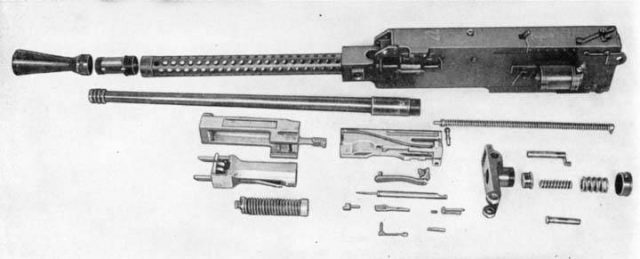
The No-5 cannon in terms of performance has surpassed all modern imported models. And not only guns, but also some large-caliber machine guns. At the start 1942 years, only one aircraft gun in the world was not inferior to the No-5 in practical rate of fire. It was the Soviet ShVAK, but at the same time she was almost 10 kg is heavier than it and much more complicated technologically.
Until the very end of the war, American aircraft received "greetings" from their Japanese colleagues., fired from copied American machine guns and cannons.
dignity: reliability, rate, practicality.
disadvantages: low rate synchronous embodiment
7. VYA-23. the USSR
Here is the very exception. A slightly different caliber, but we won't go by. Moreover, if the Japanese No-5 was weaker, that is not very strong.

When it became clear, that ShVAK is frankly weak, it was decided to develop a gun for a more powerful cartridge.
At all, in the pre-war world, the trend towards an increase in calibers was observed, but how to say it, not very active.
The Danes from Madsen converted their 20-mm machine gun to a 23-mm caliber. Hispano-Suiza developed 23-mm variants of the HS-406 and HS-407. Famous and respected firms, probably, therefore, Soviet designers also paid attention to the 23-mm caliber. There was even a small scandal about the alleged sale of technical documentation for the 23-mm HS-407 motor-gun by employees of "Hispano-Suiza".
Hard to tell, it was true, or not, no documentary evidence could be found. But these accusations against Birkier strangely coincide in time with the issuance of an assignment by the People's Commissariat of Armaments in the USSR to design a new 23-mm air cannon in the summer 1937 of the year.
And intelligence in the Soviet Union could do a lot ...
In the same period, the development of a new 23 mm cannon cartridge was started.. And there is an interesting nuance here.. For some reason, all foreign companies preferred cartridges with moderate power.. "Madsen" - 23x106, Hispano - 23×122, and the Tula masters decided otherwise, creating a cartridge 23x152, which surpassed all imaginable analogues.

The reason for creating such ammunition is a little unclear.. definitely, power was excessive, and, excessive unnecessarily. Besides, the use of such a cartridge generated recoil, which not every design could handle.
Perhaps it was planned to unify this cartridge in the future for use in anti-aircraft guns. But it turned out like this, that the 23x152B cartridge turned out to be very successful, he was destined to have a long life in a variety of artillery weapons systems.
However, at first, the greatest problem was precisely the high recoil of new guns.. FROM. AT. Ilyushin, who tried in every possible way to abandon the installation of VYa on his BSh-2 attack aircraft, motivated his reluctance precisely by the high power of return.
Really, in March 1941 years, experiments were organized to measure the recoil values of competing guns. It revealed, that the recoil force of the MP-6 competitors' cannon is 2800 — 2900 kgf, and the gun TKB-201 (in the future, just VYa) — 3600-3700 kgf.
true, It should be noted, that the return in 3,5 tons at the guns of VYa did not prevent her from going through the whole war on Il-2 attack aircraft. but, only this aircraft with an armored frame and a reinforced center section was able to carry these guns. But with what efficiency ...
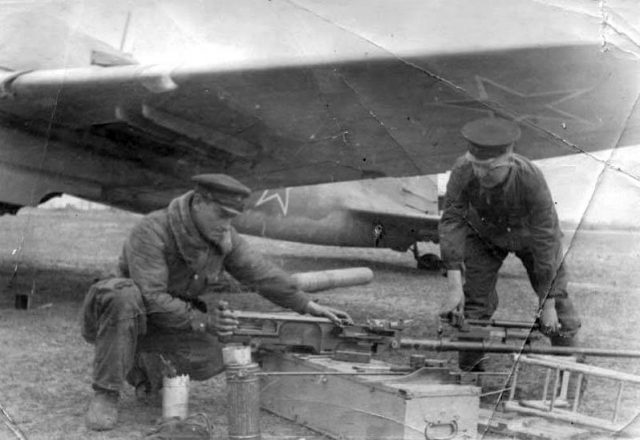
In this article, we will not consider the use of VYa-23 as an anti-tank weapon, but that, that the Il-2 was a very effective attack aircraft, it would never occur to anyone to dispute.
dignity: the most powerful projectile with good ballistics, good rate.
disadvantages: return, which did not allow the use of a cannon except for the Il-2.

Summing up in some way everything written, remark, that against the background of their foreign classmates, Soviet guns look pretty good, despite, that the Soviet design school was very much inferior to all.
Nevertheless, we had our own (and very good) weapon.
sources:
— Based on materials from the works of Evgeny Aranov.
/Roman Skomorokhov, Alexander Staver, topwar.ru/











